.
.
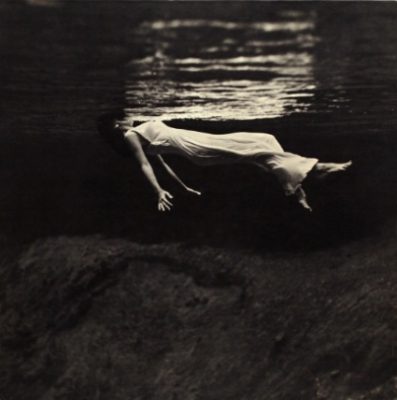
Undercurrents, a 1962 album by pianist Bill Evans and guitarist Jim Hall, is among the covers noted critics, authors and musicians list as their all time favorite record album covers
.
__________
.
“Reminiscing in Tempo” is part of a continuing effort to provide Jerry Jazz Musician readers with unique forms of “edu-tainment.” As often as possible, Jerry Jazz Musician poses one question via e-mail to a small number of prominent and diverse people. The question is designed to provoke a lively response that will potentially include the memories and/or opinion of those solicited.
Since it is not possible to know who will answer the question, the diversity of the participants — and the number of them — will often depend on factors beyond the control of the publisher.
The responses from the people who chose to participate in this edition are published below with only minor stylistic editing. No follow-up questions take place.
.
.
_____
.
.
In this edition, we ask the question:
“What are some of your all-time favorite record album covers?”
.
*
.
Those contacted were informed that any musical genre was welcome.
Many thanks to all of our participants, whose partial biographies accompany their response. For more complete information about each participant, click on the link under their photograph.
Readers are invited to share their own lists by using the comments field at the conclusion of this feature.
_______________
.
.
.

.
Critic; biographer; author of several books on jazz and film — most recently Bing Crosby, Swinging on a Star: The War Years, 1940 – 1946; six time recipient of ASCAP-Deems Taylor Award, Guggenheim Fellowship, and Peabody Award in Broadcasting
.
___
.
These 10 album covers are listed in the order they occurred to me.
.
The Duke [Columbia Records: Hot Jazz Classics Set C-38]. From the era of 78s, a photograph that captures Ellington’s extraordinary grace, half enveloped by a Zenlike brushstroke of a grand piano. The cover doesn’t give his last name, just The Duke, in yellow caps against a pinstriped purple field.
.
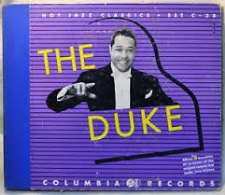
.
.
Lady Day [Columbia CL 637]. You could make a 10-best list just of Billie Holiday covers, and this 1956 compilation shouted at you from the record bin to get on board, with its oddly shaded monochrome photograph, blocked on two sides by giant white letters, with only dancing red and blue lower-case letters for contrast.
.
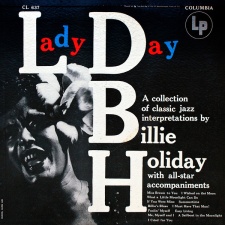
.
.
Urbanity [Clef 707]. And you could make a list just from David Stone Martin’s brilliant covers, but this one (also 1956) always makes be laugh, because the startlingly vulgar drawing of a lady in red baring her backside is such an unlikely fit for an album of piano by Hank Jones with this most suitable title.
.
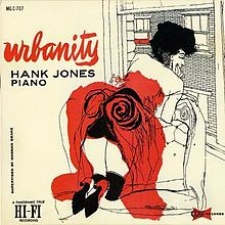
.
.
Love for Sale [United Artists GXC 3133]. This 1959 cover also made me laugh, when I discovered it in a country music shop in Denver. White models were often imposed on the albums of black artists, but you have to wonder if the art director who chose a prostitute and her john even listened to the superbly contentious variations in this early project by Cecil Taylor.
.
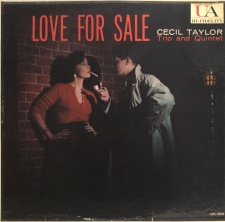
.
.
Ornette! [Atlantic SD 1378]. Sometimes lettering is more dramatic than a photograph, for example this blue and yellow pattern exclaiming Ornette Coleman’s first name in 1961. I don’t say it’s his best quartet session, but it is my favorite, not least for Scott LaFaro’s clairvoyant bass.
.
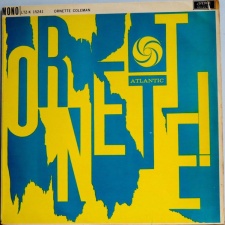
.
.
Sketches of Spain [Columbia CL 1480] Miles (no last name) and Gil Evans in 1960, the former in a full-figure silhouette, his trumpet aimed at the much smaller bull on the right (no contest for this matador), against a Rothko-esque scrim of three colors and two distinct typefaces: muy dramatic.
.
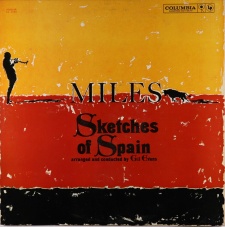
.
.
Ascension [Impulse AS-95]. In its way, as disarmingly innocent as Cecil’s Love for Sale: John Coltrane, formally attired and placidly seated on a barstool, holding a soprano saxophone, which he does not play on this 1965 gatecrashing epic, and with a white background and a friendly-colored title to soothe your soon to be shattered nerves.
.
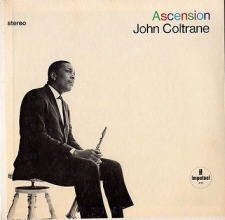
.
.
Satchmo at Symphony Hall [Decca 583017] Decca had a nice house style, except when it tried to be coy, and this famous 1951 monochrome portrait, enveloped by vividly colored lettering, manages to convey the stupendousness of the man, the event, and the regard in which he was held.
.
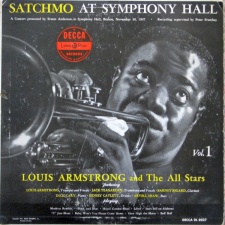
.
.
Body & Soul: A Jazz Autobiography [RCA-Victor LPV 501] RCA had the most authoritative house style for some 20 years, appealing, varied, inventive, grown-up.—.a shelf of classics, never more so than in its Vintage collection, launched in 1964 with this Coleman Hawkins retrospective. Why haven’t these been reissued?
.
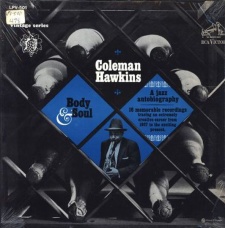
.
.
Tijuana Moods [RCA-Victor 2533]. RCA could also be surreal (Sonny Meets Hawk!), insane, especially when they let cartoonist Jim Flora loose (Inside Sauter-Finegan), or racy, as on this tellingly sexy 1962 Charles Mingus release which features a dancer and the grooviest jukebox ever.
.
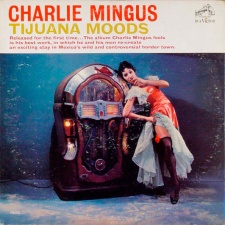
.
.
.
________
.
.
.

.
Jazz singer; Mack Avenue artist; runner up in the 2015 Thelonious Monk Jazz Competition; upcoming album to feature pianist Benny Green and his trio as well the Emmet Cohen Trio
.
___
.
Portrait of an American Family, by Marilyn Manson
Nevermind, by Nirvana
The Stranger, by Billy Joel
Monk’s Music, by Thelonious Monk Septet
Sixteen Saltines, by Jack White
Yesterday and Today, by the Beatles (original cover)
A Modern Tragedy: Vol 1, by Grandson
A Wolf in Sheep’s Clothing, by Black Sheep
Underground, by Thelonious Monk
Meat is Murder, by the Smiths
.
.
 |
 |
 |
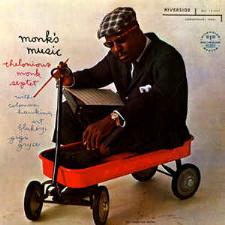 |
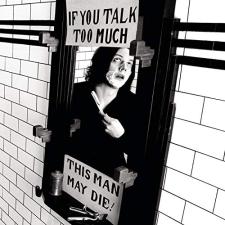 |
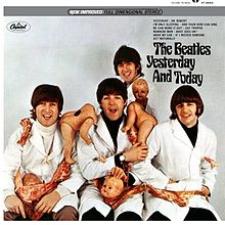 |
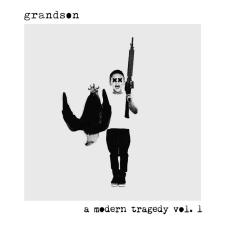 |
 |
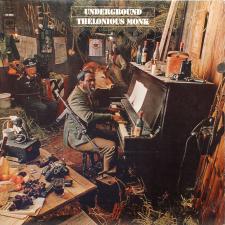 |
 |
.
.
.
________
.
.
.
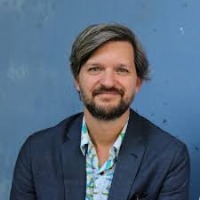
.
Investigative journalist; special correspondent for .Vanity Fair; .author of Sticky Fingers: The Life and Times of Jann Wenner and Rolling Stone Magazine
.
___
.
Chris Connor, He Loves Me, He Loves Me Not (Photo by Jay Maisel/cover design by Marvin Israel)
I prefer Chris Connor’s recordings for Bethlehem Records, especially the track “All About Ronnie,” but this album cover captures Connor perfectly — lush and intimate.
.

.
.
Duke Ellington, The Afro-Eurasian Eclipse. (Cover direction by Phil Carroll)
I first came to Duke Ellington through his later works, starting with this one, which sparked a lifelong passion for the Duke. He’s my favorite artist of the 20th Century. This taxonomy of African and Asian “types” would almost certainly be considered politically incorrect today, but visually it’s an extraordinary cover, one you can get lost in. The price tag adds a certain pop poetry to it.
.
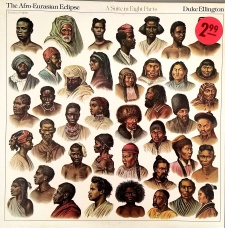
.
.
Roscoe Mitchell, The Solo Saxophone Concerts. (Cover photograph and art by Bill Smith).
My friend Franz Nicolay of the band The Hold Steady brought this to my house for one of our record club get togethers. The squiggly skronk solos weren’t for everyone, but no one could deny that the cover was marvelous. Simultaneously proud, confrontational, humble and deeply personal, not unlike the music.
.
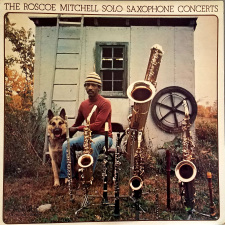 .
.
.
Kiss, Dressed to Kill. (Cover photo by Bill Greun, design by Peter Corriston)
This is one of the first LPs I ever owned, handed down from a neighborhood kid who was going off to college and divesting himself of childish things. I was eight years old and became obsessed with the exotic implications of this cover snapshot. It seemed to imply that this is how these four guys walked around on the street in daily life. In makeup and clogs. The album is actually a good one as far as Kiss is concerned, a stripped-down and competent glam rock album, very much inspired by the New York Dolls, just before they started branding lunch boxes and comic books.
.
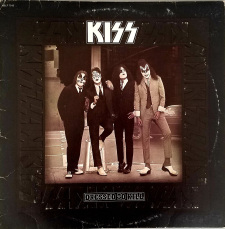 .
.
.
Ernie Bruno, That’s All. (Cover photo by Paul Spatafora).
I found this locally-pressed LP at a Goodwill a few years and discovered, after poking around on Google, that Ernie Bruno was still doing the occasional gig at a social club in Poughkeepsie, New York. The cover has an intriguing static quality to it. Is he a comedian? A self-empowerment lecturer? (He’s a lounge singer.) The title is both existentially final but also perhaps merciful. The liner notes have this to say: “Ernie Bruno is not the best thing to come down the pike …….BUT HE SURE IS GOOD!!!”
.
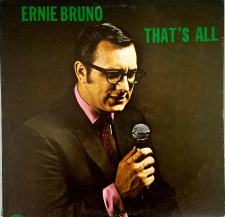
.
.
Marvin Gaye, I Want You. (Painting by Ernie Barnes, design by Paul Mulvey).
People of a certain age will remember this painting from the ending credits of the CBS sitcom “Good Times,” wherein the camera would pan across these extraordinary figures by the late Ernie Barnes. I think of this painting as the urban answer to Grant Wood’s “American Gothic.” It also happens to perfectly capture the sound of this album.
.
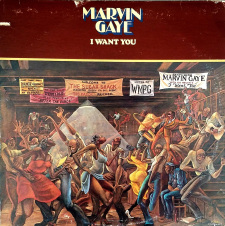
.
.
Charlie Rich, The Fabulous Charlie Rich.. (Cover image by Al Clayton).
I went on a journalistic odyssey when I decided to write a long story on Charlie Rich for the Oxford American magazine a few years ago. I made the case that Rich is the missing link between Ray Charles and Elvis Presley. If the U.S. Treasury ever minted coins for great American soul singers, this profile would surely fit the bill. This album, which I love, was a gift from a woman named Natalie Rosenberg, who produced some rare soul cuts with Rich in 1966, one of which features Isaac Hayes, who had once been Natalie’s babysitter in Memphis.
.
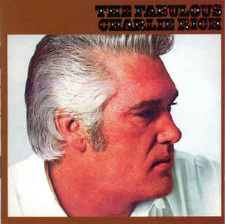 .
.
.
Sonny Rollins, Way Out West
From the liner notes: “The cover photo of Rollins is by William Claxton, internationally known West coast jazz photographer. It was Rollins’ idea to celebrate his first trip West posing in Stetson hat, holster and horn.”
An unassailably great album and one of the most fantastic cover designs in the history of LPs. It really captures the ambition, courage and humor of Sonny Rollins the artist.
.
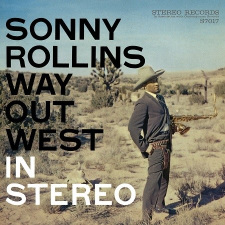
.
.
Thelonious Monk, Monk’s Music. (Cover photo by Paul Weller, design by Paul Bacon).
This album cover captures Thelonious Monk so completely — the humor, the surprise, the vulnerability, both hep cat and maestro in a single red-painted wagon.
.

.
.
Esther Phillips, The Country Side of Esther Phillips. (Cover photo by Lee Friedlander).
Esther Phillips is one of my favorite singers. Her story is both tragic and fascinating and has several phases — from Little Esther in the 50s chitlin circuit to, later, Esther Phillips, the jazz soul singer on the Kudu and CTI labels under the direction of Creed Taylor. In between, Atlantic Records cast her as the female answer to Ray Charles in his “Country and Western” period. Phillips’ last name was borrowed from the Phillips gas station chain (true story) and her wig seems to have been borrowed from Dolly Parton.
.
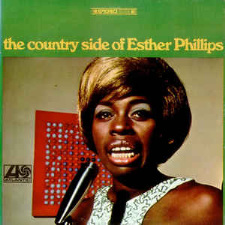
.
.
Esther Phillips, Black-Eyed Blues. (Photograph by Alen MacWeeney. Design by Sibbie McDonough).
I wanted to include this album cover as a contrast to her Atlantic album cover, which is a wonderful album musically but features a version of Phillips that I think reflects Ahmet Ertegun’s idea of Esther Phillips rather than her own. The way her hair is tied back, it looks as if she has just removed the wig she wore on the Atlantic cover. Under Creed Taylor’s direction, Phillips was liberated to be the jazz-oriented blues singer she was, with super musicians backing her, including Bob James, Ron Carter, Pee Wee Ellis, and Pepper Adams. The cover image captures the dignity of a woman who spent much of life struggling for dignity (she was a drug addict). Here is the vision of grace, surety, naturalness and beauty you want for a woman who so clearly, in both sound and in life, suffered the blues.
I also love the ring of grapes.
.
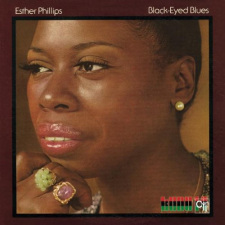
.
.
.
.
________
.
.
.
.
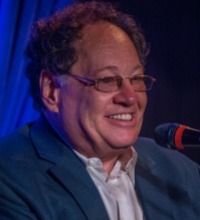
Howard Mandel
.
Author; arts reporter; president of the Jazz Journalists Association
.
___
.
Interesting question. Some of these covers are unusual, but some I respond to for no special visual reason, but they seem to appeal, in some cases because they’re suggestive or reflective of the music.
Out to Lunch, Eric Dolphy, Blue Note
Maiden Voyage, Herbie Hancock, Blue Note
Symphony for Improvisers, Don Cherry, Blue Note
The Magic of JuJu, Archie Shepp, Impulse
Axis Bold as Love, Jimi Hendrix, Warner Bros.
Quicksilver Messenger Service, Capitol
Weasels Ripped My Flesh, Frank Zappa, Bizarre
Revolver, Beatles, Capitol
Hoodoo Man Blues, Junior Wells, Delmark
Friends and Neighbors, Ornette Coleman, Flying Dutchman
Levels and Degrees of Light, Muhal Richard Abrams, Delmark
You can tell my age by what I’ve included. Those are the covers that come to mind immediately, vividly, maybe because I played the albums so often. Of course there are more.
.
.
 |
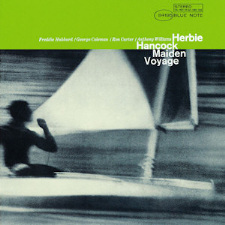 |
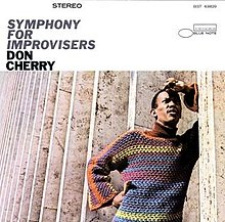 |
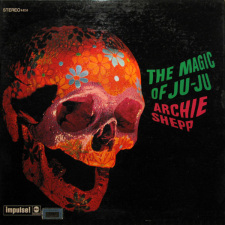 |
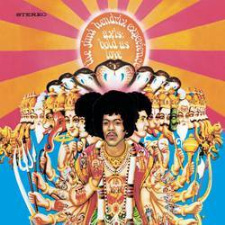 |
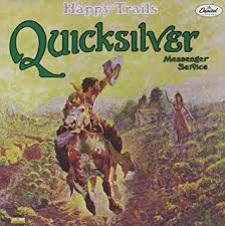 |
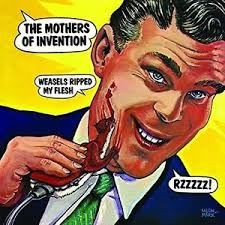 |
 |
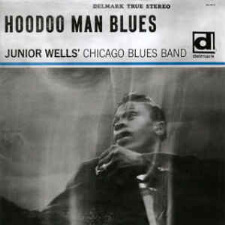 |
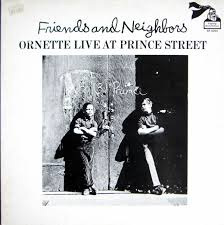 |
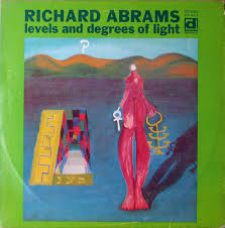 |
.
.
.
________
.
.
.
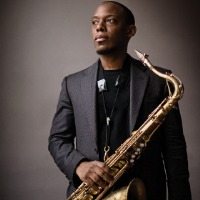 Marcus Strickland
Marcus Strickland
.
Jazz saxophonist; Blue Note Records recording artist; most recent recording People of the Sun
.
___
.
Talking Book – Stevie Wonder
Ascension – John Coltrane
Renaissance – Q-Tip
Ruff Draft – J Dilla
Vespertine – Björk
Bitches Brew – Miles Davis
E.S.P. – Miles Davis
Voodoo – D’Angelo
Los Angeles – Flying Lotus
Drunk – Thundercat
To Pimp A Butterfly – Kendrick Lamar
People of the Sun – Marcus Strickland
.
.
 |
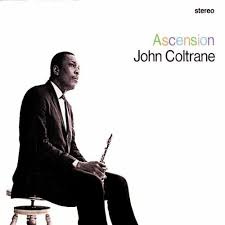 |
 |
 |
 |
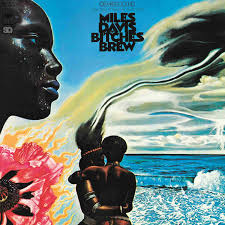 |
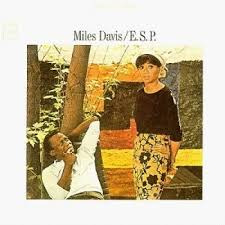 |
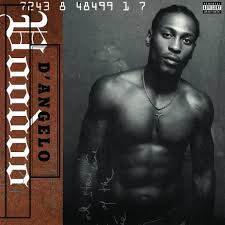 |
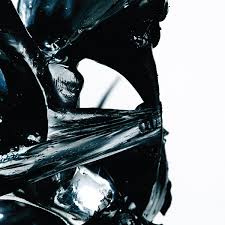 |
 |
 |
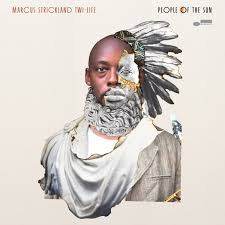 |
.
.
.
________
.
.
.
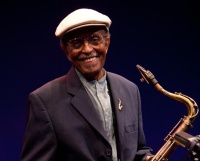
.
Saxophonist; composer; arranger; recording artist (since 1948, on over 100 albums)
.
___
.
An album cover that comes to mind is the Miles Davis record Someday My Prince Will Come. Miles insisted on having a black woman on the cover because they always had white women on it. I thought it was a very good thing that he did that.
The cover photo that Carol Friedman took is definitely the best cover of mine.
.
.
 |
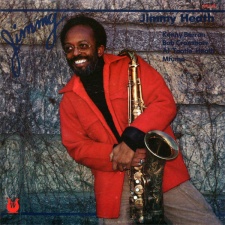 |
.
.
.
________
.
.
.
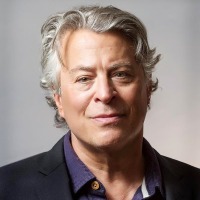
.
Journalist; documentary filmmaker; television producer; author of several books, most recently .Bop Apocalypse: Jazz, Race, the Beats and Drugs
.
___
.
Here are my selections…
King Crimson, Court of the Crimson King
Frank Zappa, Weasels Ripped My Flesh
George Harrison, All Things Must Pass
Beatles, Revolver
Joni Mitchell, Clouds
Hendrix, Axis:Bold As Love
Stones, Sticky Fingers
Patti Smith, Horses
David Bowie, Alladin Sane
David Bowie, Heroes
Beatles, Sgt. Pepper
Janis Joplin, Big Brother and the Holding Company
.
.
 |
 |
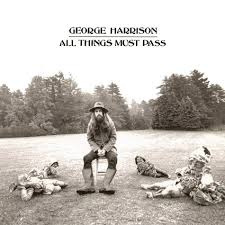 |
 |
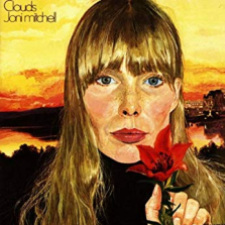 |
 |
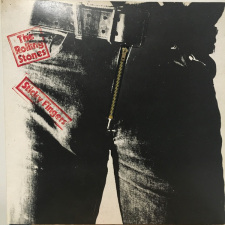 |
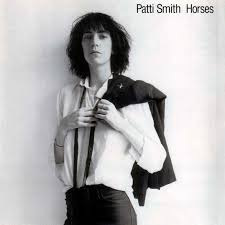 |
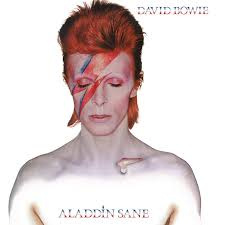 |
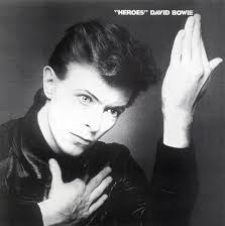 |
 |
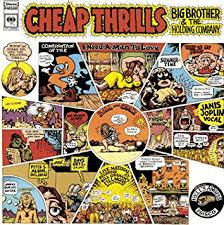 |
.
.
.
________
.
.
.

.
Pulitzer Prize winning music critic for his writings on music in the .Washington Post; .writer; editor; producer; professor of journalism and music at the University of Southern California; author of. Parallel Play
.
___
.
.
Mothers of Invention — Weasels Ripped My Flesh. This still seems an insane idea after 50 years. Not surprisingly, at least for this Zappa skeptic, the album .is more fun to look at than to listen to.
.

.
.
Immaculate Heart Trio — Schubert: Piano Trio. Yes, they were real nuns and the performance. is a pretty good one, but nothing can live up to this cover!
.

.
.
Tchaikovsky: Symphony No. 5 BBC Symphony, Sargent. Victor LM-1947 — A souvenir of the days when record jackets could be distinguished works of art in themselves.
.

.
.
Beethoven: Symphony No. 5. Cleveland Orchestra, Szell. Odyssey performance. OK, this is a reissue — the fastidious Mr. Szell would never have permitted such an image to be released .during his lifetime — but it is charming and funny and somehow captures the madness that can take over after a long photo shoot.
.
.
.
This was a series of low budget reissues in the mid-1970s from the Westminster Record Label. I’m especially fond of the “Gotterdammerung” release — this IS very much “how the cookie crumbled” at the end of Wagner’s “Ring” cycle.
.

.
.
The 1970’s have sometimes been called the “taste-free decade.” Decide for yourself about this cover for Wagner’s “Die Walkure.”
.

.
.
And then they sometimes just went too far!
.

.
.
Leopold Stokowski and his Symphony Orchestra — Firebird Suite and Escales. This deeply crazy cover came out on all three of the speeds being offered for sale in the late-40s-early 50s — 78, 45 and 33 RPM. Nobody has ever been able to figure out what was happening here and what it has to do with Stravinsky or Ibert.
.

.
.
Arturo Toscanini and NBC Symphony Orchestra — Grand Canyon Suite. Highly stylized, like the best comic book art. This .recording also .captures one of the few times Toscanini ever showed an interest in American music.
.

.
.
.
________
.
.
.
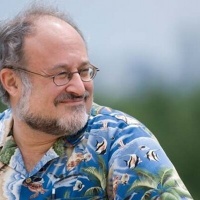
.
Grammy Award-winning American journalist and author; 2015 recipient of the Jazz Journalists Association’s Lifetime Achievement Award in Jazz Journalism; ASCAP Deems Taylor Award recipient for his work with Rhino Records; WFMT jazz radio host
,
___
.
My first thought was that I should peruse my LPs to make sure I didn’t miss anything. My second thought was that with 6,000 at home and thousands more in storage – not counting the several thousands I’ve divested or ruined or lost over the years – my first thought was a really bad one.
Here are a few. I’ll think of another 50 by the time you run this.
Shelly Manne, Hot Coles. It’s all Cole Porter tunes in unexpected arrangements. The front cover shows the legendary drummer, holding his bass and snare drums, grimacing as he walks barefoot over hot coals, with a fiery red backdrop. That’s goofy enough, in a traditional cornball-cover way. What takes it home is the back cover photo: Manne, a smile of joyous relief on his face, soaking his feet in the bass drum, now filled with ice, against a background now lit to a cooling blue.
.

.
.
Sonny Rollins, Way Out West. In the desert, Rollins stands tall in a suit and tie but wearing a ten-gallon hat, holster, and gun belt; on his left hip he cradles his “weapon,” the tenor saxophone; in front of the sagebrush, a cow’s skull on the ground mimics the angle of Rollins’s gaze. It’s an all-time classic.
.

.
.
Miles Davis, Bitches Brew. The cover painting remains nearly as mind-bending as the music was when it arrived – a pan-national, Afro-futurist phantasmagoria, both spooky and sanguine.
.
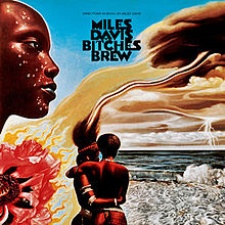
.
.
Lester Young, Lester Young Trio. We could probably survey ten favorite albums with covers by David Stone Martin, whose unfussy line drawings suggested at least as much as they pictured. But let’s go with this one, which wittily juxtaposes a sketch of the legendary saxophonist, and holding his horn at the unique angle he favored, against another symbol of off-kilter elegance: the leaning Tower of Pisa.
.
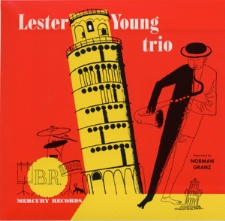
.
.
Thelonious Monk, Underground. This obsessively set-decorated photo presents Monk as a guerilla fighter (which he was – musically and socially) seated at a war-torn old upright in his “secret lair.” Fans have been raving about it for 50 years.
.
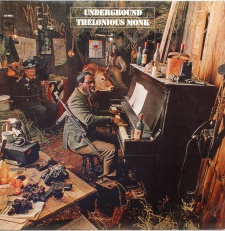
.
.
Frank Catalano, Jimmy Chamberlin, David Sanborn. Bye Bye Blackbird. This is arguably my favorite of several Catalano album covers painted by the rollicking Tony Fitzpatrick, the internationally renowned artist, poet, and actor. It’s a feast for the senses.
.

.
.
John Abercrombie, Timeless. Just another gorgeous balance of color and composition from the ECM Records Gallery of Fine Arts.
.
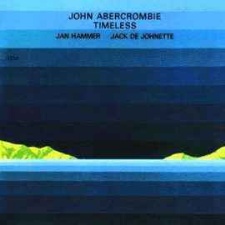
.
.
Dexter Gordon, Gettin’ Around. It’s a perfectly composed Blue Note photo. The personnel takes up the the top left corner above a vast middle swath of unused space, which focuses attention on the bottom third. That’s where the saxophonist, wearing a beret and a broad smile, pedals past a row of unused bicycles. It’s a little silly, black-and-white arty, quite endearing, and wholly indicative of Gordon’s personality.
.
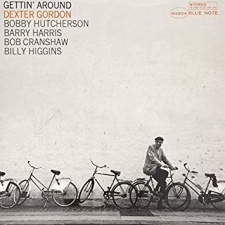
.
.
Muhal Richard Abrams, Things To Come From Those Now Gone. I could never tell quite what’s happening in this photo – which superimposed what seems to be a time-lapse photo of a speeding vehicle on top of a fisheye shot of the piano keyboard – and that still isn’t a problem.
.
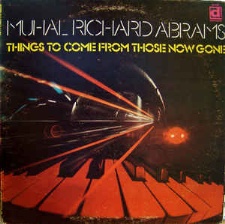
.
.
And of course, the Tijuana Brass’s Whipped Cream & Other Delights. The cover photo – of that fresh-faced but sly model clothed only in whipped cream – fired a couple million teenage musicians’ imaginations, and probably sent half of them on a career path their parents disapproved of.
.

.
..
.
________
.
.
.

.
Historian; jazz writer since the 1940’s; radio host; recipient of the 2014 Jazz Journalists Association Lifetime Achievement Award;, novelist, most recently of Backwards Over
.
___
.
Bunk Johnson was my first jazz hero. I was buying his 78RPM’s in the early 1940’s and acquired this 1947 session when it was released on LP in the early 1950’s. I am still impressed by his artistry.
.
.
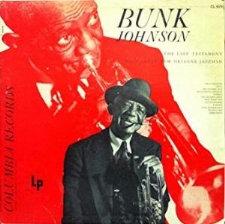
.
.
.
________
.
.
.

Veryl Oakland
.
Jazz photographer; primary photographer chosen to illustrate. The Encyclopedia of Jazz in the Seventies. by critics Leonard Feather and Ira Gitler; author of .Jazz in Available Light: Illuminating the Jazz Greats From the 1960’s, 70’s and 80’s
.
___
.
Most of my favorite album cover photos are all jazz recordings featuring images of the featured artist. One exception that stood out for me was a photo based on the title of the 1962 United Artists album, Undercurrent, by Bill Evans and Jim Hall, revealing an underwater view of a woman wearing a long white gown. The image was taken by fashion photographer Toni Frissel.
.
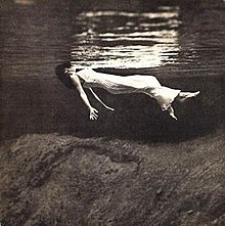
.
.
Of those album covers featuring the musicians themselves, I was particularly enamored with Riverside’s 1961 Thelonious Monk in Italy, .by New York photographer .Lawrence Shustak — a reversed, double head shot of Monk with the keyboard reflected in his glasses.
.
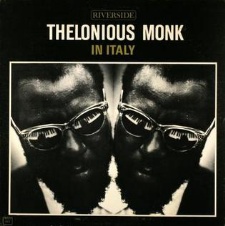
.
.
And I always looked forward to seeing some of the takes made by Giuseppe Pino of Milan, Italy, what I describe as “informal portraits.” A few of his covers that stood out included: the especially photogenic Yusef Lateef (The Gentle Giant, .Atlantic,1972), .in a partially obscured, very grainy close-up; a full-on smiling facial of Elvin Jones for the album, Elvin Jones Is On the Mountain. (Trio Records-Japan, 1975); and the two-disc album, Charles Mingus: Passions of a Man. (Atlantic, 1979).
.
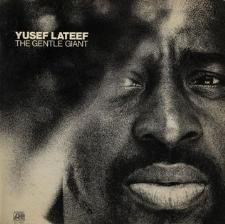 |
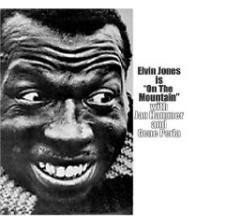 |
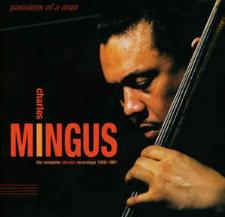 |
.
While Giuseppe and I never met in person, the two of us — along with bassist/photographer Milt Hinton — were featured in a three-month joint jazz photo exhibition in 1990 hosted by photographer Lee Tanner at Kimball’s East in the San Francisco Bay Area.
.
.
.
________
.
.
.
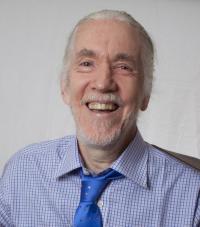
.
Journalist (Newsweek, Rolling Stone); author (Ray Charles: Man and Music); musician; songwriter
.
___
.
Okay, here goes:
Ray Charles – Volcanic Action of My Soul (Tangerine/ABC)
Nat “King” Cole– The Best of Nat “King” Cole (Capitol)
Ray Charles – Ray Charles in Person (Atlantic)
Ray Charles – Ray Charles Invites You To Listen (Tangerine/ABC)
Erroll Garner – Concert By the Sea (Columbia)
Some people may may say that only Erroll’s album is jazz, but they are all jazz for me. As well as looking good, they sound fabulous. My old LP’s are nearly worn out!!
.
.
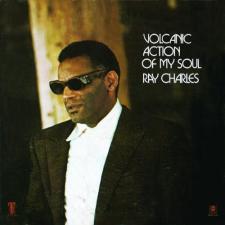 |
 |
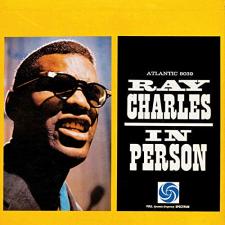 |
 |
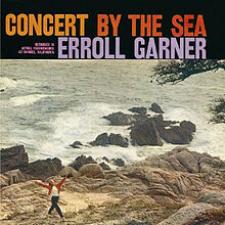 |
.
.
.
________
.
.
.
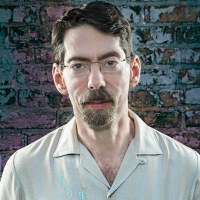
.
Jazz pianist; composer; educator; bandleader; recording artist; 12-time Grammy nominee; most recent recording Live in Europe. (Palmetto)
.
___
.
Nice question! Here are some from me.
.
Thelonious Monk: Underground (Columbia)
Sonny Rollins: Way Out West (Contemporary)
Thelonious Monk: Alone In San Francisco (Riverside)
Joni Mitchell: Blue (Warner Brothers)
Miles Davis: Miles Smiles (Columbia)
Glenn Gould Plays Bach (Columbia)
Sonny Clark: Cool Struttin’ (Blue Note)
Eric Dolphy: Far Cry (Blue Note)
The Beatles: Magical Mystery Tour (Epic)
Joni Mitchell: Travelogue (Nonesuch)
.
.
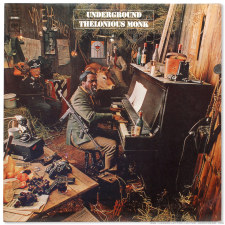 |
 |
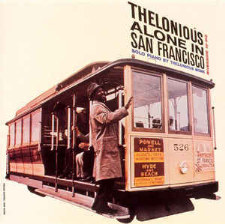 |
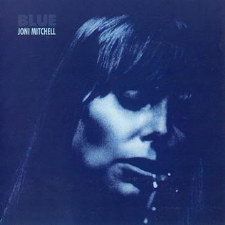 |
 |
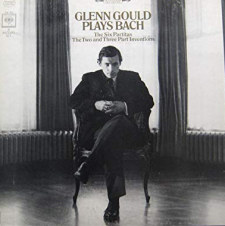 |
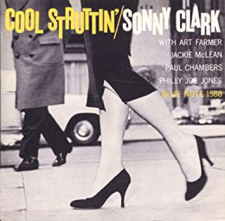 |
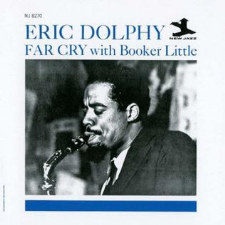 |
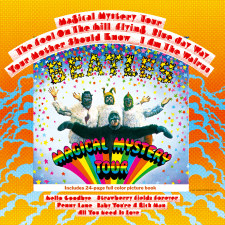 |
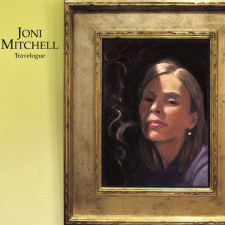 |
.
.
.
______
.
.
.

Austrian jazz musician; alto, soprano and tenor saxophonist; singer; composer; most recent recording as leader is .Golden Rule
.
___
.
Thank you for giving me the chance here to speak about favorite jazz album covers and their music. Of course it is extreme hard to limit myself to just 10, I tried my very best to make it.
.
It is really hard to choose a cover from John Coltrane, because there is so much great music behind, each album reveals another part of the incredible fast evolving story of this music visionary and evokes so much memories of experiencing this incredible deep music heritage. Of course I would always chose ‘A LOVE SUPREME’ but to find another one of him where album cover and music really move me, I want to choose here COLTRANE, 1962, on the cover the photo of master photographer Pete Turner in beautiful shades of blue with a close focus on John in trance playing his tenor saxophone. This album also incorporates one of my favorite songs of John ‘Tunji’ and it is in another way very special, because it also represents the first studio recordings of Coltrane’s classic Quartet.
.
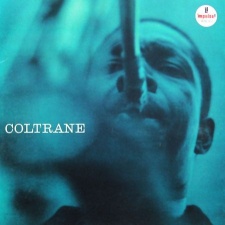
.
.
JOURNEY TO SATCHIDANANDA from Alice Coltrane, recorded 1970 is a beautiful album inside and outside. Alice left us here a masterpiece of music for elevating the minds of generations and generations. The cover has a beautiful warm tone and Alice is sitting on the floor with a reflective expression.
The beautiful first tune also giving title to the album Journey In Satchidananda for me is most closely related to the feelings I wish to receive hearing music. It helps me to immerse in a reflective meditation trying to touch our essence and trying to find the functioning and meaning to live with an outside world, then and still now so shaken. Beautiful choice of set up, all in all a real masterpiece made with the incredible intention, that can be read in the liner notes from Alice Coltrane: “I hope that this album will be a form of meditation and a spiritual awakening for those, who listen with their inner ear.”
.
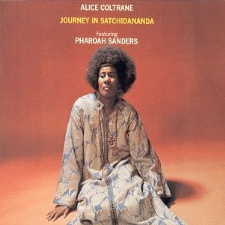
.
.
Of course Kind of Blue should be my first choice as an album of Miles Davis, because it is such a beautiful statement of enigmatic Jazz which has also a wonderful calming aspect about it through its beautiful compositions, but here I want to chose MILES DAVIS, MILESTONES, 1958 with it’s strong orange colored cover and incredible personal, personally my favorite band of Miles Davis, with the magnificent artist Julian “Cannonball” Adderly, great John Coltrane, and the formidable rhythm section with wonderful Red Garland on piano, the great Paul Chambers on bass and master “Philly” Joe Jones on drums. My favorite song here is the title song “Milestones”, a beautiful theme worked out excellently for the horn section and a compelling swing from the rhythm section and wonderful solos.
.
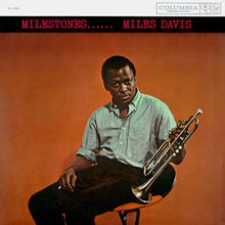
.
.
FREE JAZZ, A COLLECTIVE IMPROVISATION BY THE ORNETTE COLEMAN DOUBLE QUARTET, 1961. What an impressive name for such a powerful piece of music. Ornette’s Jazz was always free but this album just took the idea of collective improvisation to another step. He assembled two quartets and positioned them for a stereo channel: Ornette, Don Cherry on trumpet, bassist Scott La Faro and Billy Higgens on drums on the left and trumpeter Freddie Hubbard, Eric Dolphy on bass clarinet and Charlie Haden on bass and drummer Ed Blackwell on the right. The rhythm sections all play at once, anchoring the whole improvisation with a steady, driving pulse. What a feast of sound achievement and since Ornette’s music always was rooted in elements of convention and blues, ‘Free Jazz’ stayed real accessible to a lot of ears. Jackson Pollock’s painting, White Light, really represents the music in its fullest spectrum.
.
.
.
JESSE DULMAN QUARTET – LIVE AT THE DOWNTOWN MUSIC GALLERY, recorded live 2017.
This quite recent RR Gems Records release is a truly authentic piece of free experimental music, featuring Jesse Dulman on Tuba with Ras Moshe on tenor sax, Dave Sewelson on baritione and sopranino and Leonid Galaganov on drums and percussion. The deep sonority of tuba brings a humorous lightness to this vital music. A rare gem with excellent cover solution by Hanz Mambo and Ilja Tulit.
.
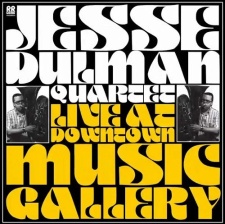
.
.
THE INCREDIBLE JIMMY SMITH, BACK AT THE CHICKEN SHACK recorded 1960
My band and I are real fans of Hammond, and well, who could you name as the incredible Hammond player of all times, the one that took the Hammond from church music to the jazz world: THE INCREDIBLE JIMMY SMITH. As Jimmy already said ‘With the Hammond, you feel it in your bones’. This record, as well as the remarkable MIDNIGHT SPECIAL, also another one of my favorite albums and covers, was recorded 1960 and features a young but stellar trio of players: guitarist Kenny Burrell, tenor saxophonist Stanley Turrentine and drummer Donald Bailey. Stanley Turrentine is one of my all time-favorite from the jazz players. This cover is one of the endless beautiful Blue Note covers. The picture was shot by Francis Wolff, the cover assembled by Reid Miles, which makes this package a timeless piece of art.
.
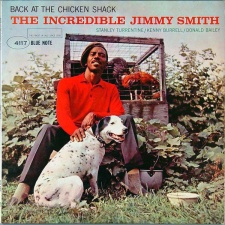
.
.
THE LESTER YOUNG TRIO, 1951. Here you have a fine example of so many of the beautiful covers painted by David Stone Martin, where great music meets great cover art. Take any of David Stone Martin covers and you will find incredible music. Lester is one of my all time favorite saxophone players and I guess a hero of so many. His fine melodic and rhythmic patterns were really groundbreaking. Amazingly enough he states himself being influenced by white saxophone and clarinet players as for example Frankie Trumbauer, who played also the slightly higher than tenor, c melody saxophone and Jimmy Dorsey who played trumpet too, were we can again see that jazz is just such a beautiful melting pot. On this release, we hear Young teamed up with two other jazz legends, drummer Buddy Rich and Nat “King” Cole on piano. This album has one of my favorite trio interpretations of “I’ve Found A New Baby.”
.

.
.
GROOVIN’ WITH JACQUET, ILLINOIS JACQUET AND HIS ORCHESTRA recorded in 1951, is another incredible Verve cover, painted by David Stone Martin with incredible music. Illinois Jacquet is another one of my favorite tenor saxophone players. He has such strong phrases paired with blues playing. It is a pity that he seems to be not so known today. What an excellent player, warm and sensitive tone, heard on countless jazz ballads and medium groove-tempo songs. Here he plays with his orchestra, which was arranged just perfect for his type of playing. He is himself an excellent composer. lllinois Jacquet is credited recording more than 300 original compositions, under which “On Your Toes” , “Blue Nocturne,” “Jacquet Jumps” and “Groovin” heard here on this album.
.
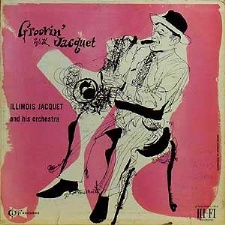
.
.
COUNT BASIE is, besides Duke Ellington, one of the most amazing big band leaders, which could keep a big band on the road for a real long time. Count has a huge discography to show and no doubt, they are all amazing. The band that Count Basie assembled in the 30’s and then in the 50’s were without doubt the groove setters and were notched with excellence … from pianissimo to fortissimo, always no matter how slow or how fast, swinging so hard. I am especially drawn to the arrangements from Neal Helfti, which were so well represented on the records “Basie plays Hefti” and “Atomic Mr. Basie”. But here we have a different scenario. The compositions from the album, CHAIRMAN OF THE BOARD, 1959, were made by the members of the band, also represented on the cover. This record cover photo just summons the amazing composers of this band and especially this record. Behind Count from left to right Frank Wess, Frank Foster – his composition the most swingiest ever, one of my favorite is opening the album “Blues in Hoss Flat”, next Thad Jones and the fine lead altoist Marshall Royal on the far right, from whom Count himself said, that he just found out how fine a composer he was. Between Thad and Marshall you have the great rhythm guitarist Freddie Green, often more felt than heard, but definitely the motor of this stunning band. Enjoy!
.
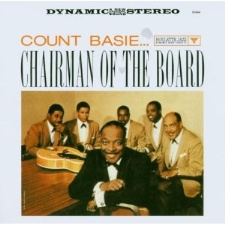
.
.
CHARLIE PARKER WITH THE ORCHESTRA – ONE NIGHT IN WASHINGTON. Although this Charlie Parker record was recorded in 1953, it was released posthumous. For this particular record Charlie Parker never managed to come to the rehearsal or at least bring his saxophone. Instead he got some plastic alto saxophone, walking on stage with no music stand, no music, no guide. He played excellent! The wonderful water paintings on this album are by Charles Reid. The local Washington, D.C. band big band played arrangements of Al Cohn, Johnny Mandel and Gerry Mulligan. Charlie Parker was one of the jazz great figures that inspired and will inspire generations of musicians.
.
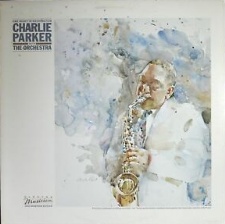
.
.
.
________
.
.
.
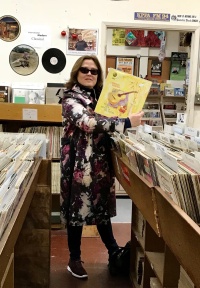
Senior Wicklander Fellow, DePaul University Institute for Business and Professional Ethics; co-author (with Jonathan Schroeder) Designed for Hi-Fi Living: The Vinyl LP in Midcentury America
.
___
.
.
New Order, Movement
The whole package of New Order Movement had an abstraction and a vagueness that both created and reflected my response to the album. First of all, was this the band I thought it was? Somehow the black Elegant-Grotesk font spelling out “New Order” distracted me from the information it provided, transcended the band name. The word, “Fact.”, wasn’t short for Factory Records, but meant precisely fact–something decided, concluded, a closing. Was the pale blue album the same as the off-white version? I needed copies of both. When the lyrics droned: “white circles, black lines surround me,” I always thought of the cover. Movement is my favorite album, in early 1980s often listened to with turntable arm off to the side for continuous, day long repeat. The song titles appear on the back cover, but they seemed to morph and change order. As the songs played I never remembered to look to determine which song was which. I still don’t know. Movement cover designer, Peter Saville came to a talk my co-author and I did in London for our book, Designed for Hi-Fi Living: The Vinyl LP in Midcentury America. Peter graciously wrote a book blurb for the back cover. I told him how important Movement was to me and he said that Movement is not an album many people focus on when they talk about Joy Division and New Order. I agreed: Movement barely seemed to exist for a while–a document from a period to painful to recall. Earlier in the day, I’d bought a copy at Sister Ray on Berwick Street and he signed the inside cover for me with his drafting pencil.
.
 |
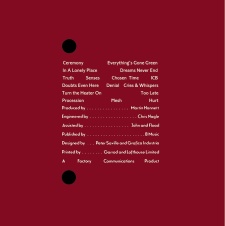 |
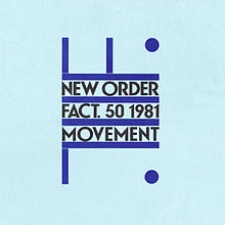 |
.
.
Beatles, Rubber Soul
When I was about four, my dad bought Rubber Soul during his lunch break at the downtown Smith Bridgeman’s department store in Flint, Michigan, and brought it home for me. I studied the cover every time I listened to the record, though not so much the front cover odd angle photo of browns and greens or the groovy lettering that made me think of bell bottoms and beaded headbands. I absorbed the details of each small back cover black and white photo, looking for clues about the boy who wrote “I’ve Just Seen A Face,” “I’m Looking Through You,” or “In My Life” as I memorized the song lyrics.
.
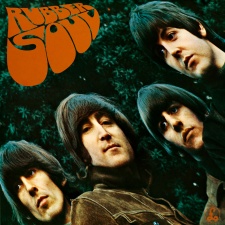 |
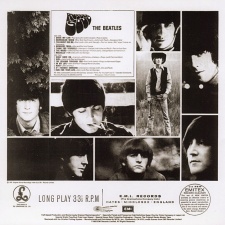 |
.
.
Harry Belafonte, Belafonte Live at Carnegie Hall
A simple yet distinctive cover: a stage, a man singing at a microphone backed by a few musicians, apparently at a live concert. “RECORDED ON THE SPOT” announces the RCA Victor label with the Nipper dog. The yellow typography spelling out “Belafonte” highlights the generally dull colors. The singer’s shirt is unbuttoned, his belted pants a little bulky and high-waisted. That was him, the voice I heard talking to the audience, singing in languages and using words I hadn’t heard before. One of the few LP’s at the cottage where we went in the summer: something of my parents I started playing because I hadn’t brought my own records along, but continued to put on over the decades. I stomped around the small living room to “The Marching Saints” when I was little; puzzled over mysterious adult meaning in “Man Piaba” and “Mamma Look A Boo Boo” when a bit older. He sang “Merci Bon Dieu” with powerful rhythmic phrasing. I often sang along, and for years friends were amazed that I knew all the words to “Hava Nageela.” Looking at the cover, I knew that man, there, Harry Belafonte, was opening up worlds to me.
.
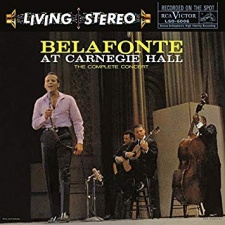
.
.
Official TV Romper Room Activity Songs
Bright red and yellow grabbed my eye on this one. Like a scene out of my own life, the attentive teacher looked like a combination of Betty Rubble and my mom–a musician and my childhood choir director who would indeed have us make a ‘train’ and circle round the room, “tooting” a repeated note to hone our four-year-old pitches. The jack-in-the-box clown is creepy, but I love the black hats, the different simple rhythm instruments, and the musical notes scattered around. I recently came across this in a bargain bin and thought, Oh! I have to have a copy.
.
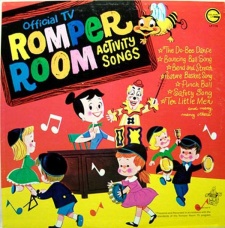
.
.
Brian Eno and David Byrne, My Life in the Bush of Ghosts
Another Peter Saville design, the cover seemed to prepare me for and transport me into the world of this music: Floating, grainy, repetitive, but innovative. The image evoked tombstones, dehumanized human crowds, archaic tools, and a pulsating light against a calming harmonizing resonating blue that matched the shifting moods, voices, soundscape.
.
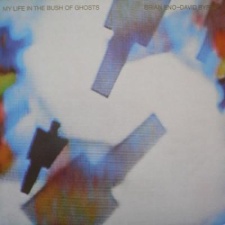
.
.
It’s Alaska
LPs such as “Enchanted Isles,” “Lure of Paradise,” and “Hawaiian Holiday” boast brilliant blue oceans, green palm boughs, magic waterfalls, sandy beaches, and the promise of hula girls. Nothing in these fantasy visions prepared me for the flaming fuchsia of It’s Alaska, an homage to the 49th state. Wintry wilds and majestic mountains play no role. Instead, a small totem pole, snow shoes, husky dog, and native crafts scatter around a bare-legged gal in a fur trimmed parka and mukluks enticing the listener to the paradise of her grizzly bear rug. Often the colors to spark an island party vibe, here the yellow and green florescent fonts set off against the pink tend more toward psychedelic hallucination than appealing adventure. The music is a kind of show tune thematic soundtrack.
.
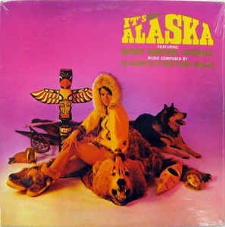
.
.
An Evening in Beirut
From the “Capitol of the World” series, and “recorded in Lebanon,” An Evening in Beirut’s enticing landscape photo places the viewer in the northern sector of the city (associated with a majority Christian population) overlooking Jounieh Bay. The lights are coming up along the shoreline, the water is silvery blue, and there’s this lovely orange font for the Arabic script. The story of the photographer, Manoug Alemian (Syrian-born, of Armenian descent), the perspective of the photo, and the Christian backgrounds of the singers, including Fairuz, create a surprisingly coherent narrative. As with many of the “Capitol of the World” albums, the liner notes are dual language. Here the side by side English and Arabic text make the album a compelling language learning tool.
.

.
.
.
________
.
.
.
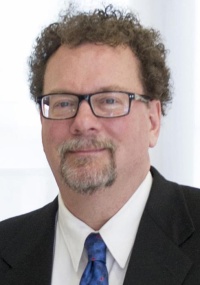
Professor, Rochester Institute of Technology School of Communication; co-author (with Janet Borgerson) of Designed for Hi-Fi Living: The Vinyl LP in Midcentury America
.
___
.
I’ve picked covers from the 1950s and 1960s with classic, whimsical or campy covers that I consider worthy cover designs, if a bit off the radar.
.
Pink Champagne for Dancing by Lloyd Mumm and his Starlight Roof Orchestra
Pink Champagne for Dancing by Lloyd Mumm and his Starlight Roof Orchestra presents a glorious cover that always make us thirsty for champagne, pink or otherwise. Two champagne coupes rest on a mirrored surface, one with a small sip left, the other being filled with a fresh bottle of pink bubbly, its silver foil rather carelessly torn away from the lip. A blond woman awaits and anticipates, eyes closed, eyebrows arched, mouth in a closed, but broad smile, her dangling earrings catching the light like the bubbles in the champagne. Perhaps she’s had a few glasses…A pink cast colors the entire cover, her Parisian pink lipstick closely matching the color of the bottle’s liquid. As far as I can determine, the name Lloyd Mumm was specially coined for this album, a tenuous, it turns out, link to the venerable Champagne house G. H. Mumm.
.

.
.
Let’s Listen by Harry Arnold and his Orchestra
The vividly colored cover of Let’s Listen by Harry Arnold and his Orchestra, offers a classic midcentury vision, with furniture designed by famous American designers Harry Bertoia and George Nelson, and bright graphics. Oh, and also a golden haired woman in black cocktail dress and pearls, a band on her left ring finger, posed in Bertoia’s famous ‘Bird’ chair, her feet in black high heels on the matching ottoman. (Her lipstick coordinates with the furniture). Her arms reach up over her head and grasp the back of the chair, forming a series of angular lines that mimic its triangular shape. Her body confronts the camera straight on, but her eyes look to her right, perhaps to someone out of the frame. A console record player sits on the floor nearby, and some bright pillows and a flower vase rest on a long Nelson platform bench.
.
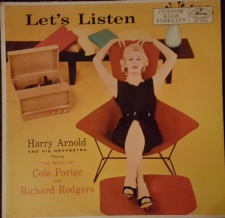
.
.
Art Van Damme Quintet, Manhattan Time
Manhattan Time is the hour of adoration, when the sun sinks out of sight, highlighting in dusky blue a skyline, somehow familiar, outside a city apartment’s room with a view where a well-coiffed woman wearing ornate, sparkling jewelry rests her unadorned left hand along the loveseat’s back and accepts her faceless male companion’s caress. A single girl in the city on a classic “bachelor pad” album cover. The plump cherry in her cocktail glass glows with the same fuchsia as her lips and nails, while “the Quintet sets up a light, swinging rhythm that never loses its pulse, and then goes on to trace delightful variations around old favorites and new conceits alike.”
.
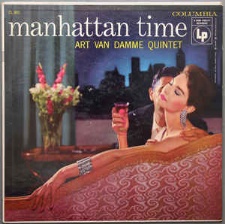
.
.
Music for an Italian Dinner at Home
The Chianti bottle, red checked tablecloth, antipasto salad, and aging “Mamma” create a classic cover for Music for an Italian Dinner at Home, but the brilliant orange background, cut honeydew melon slices poised in a crystal fruit bowl, and the pink flower vase stuffed with feathers place this cover well into the realm of camp. The notes begin: “Remember the last time you and your best girl…or you and the family had dinner out at that fine Italian restaurant, the one with the atmosphere, the one that was almost like an evening in Rome, or Milano…. or Venice?” The instrumentation Italiano may inspire visions of “a group of fine, swarthy sons of Italy” playing tableside at “the best Italian restaurant you ever dreamed of visiting.” The minestrone, scaloppini of veal, and cannellone recipes for the at-home chef originated in the kitchen of “Maria’s Restaurant” in Manhattan, supplied by chef Albert Fanfoni. Cooking hints include “sprinkle with parmesan” and “consider substituting olive oil for butter.” This 1955 LP was part of a set from RCA that included French, German, and Chinese versions, as well as the American Dinner at Home – Barbecue. The cover was shot by prolific album photographer Wendy Hilty.
.
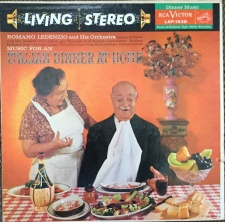
.
.
The Perfect Background Music for Your Home Movies
The Perfect Background Music for Your Home Movies finds a perfect nuclear family of four gathered amiably around a Kodak movie projector in a room informally set up for viewing. A small collection of LPs, a stereo, and a hi-fi turntable are visible off to the right where presumably this record would be playing, providing an accompanying music soundtrack for moving images of travel, parties, and children. “Whether your films are of the Grand Canyon or the streets of Paris or just Grandma and the children frolicking on the front lawn,” the liner notes intone, this album offers sound to enliven otherwise silent films as we experience “the joy of showing”. This cover makes me want to dig out old family movies.
.
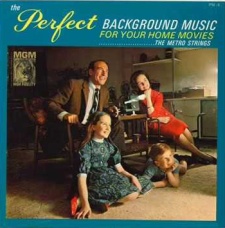
.
.
Don’t Stop! by Billy Larkin and the Delegates
Don’t Stop! by Billy Larkin and the Delegates features a young African-American woman photographed mid-dance move, wearing a black sleeveless top and a striking black, white, and red striped miniskirt, cinched by a wide black belt, her tall black boots just visible near the bottom of the album cover. Her skirt, made of vinyl, appropriately enough for a record cover, pops out of the image, and captures a style that is still enjoying popularity. The jazz-based LP features a fun and funky version of “Sunny” along with other jazzy versions of jazz standards as well as popular hits of the era. The cover photograph is by Ivan Nagy, who also photographed Martin Denny’s classic album cover Quiet Village, Buffalo Springfield’s self-titled debut album, and Runnin’ Strong from the Ventures, along with dozens of others. He won a Grammy in 1970 for Best Album Cover for Indianola Mississippi Seeds by B.B. King, along with graphic artist Robert Lockart. The Delegates include James Daniels on guitar, Leon Flowers on trumpet, Wilbert Eugene Helmsley on tenor saxophone, Fats Theus on baritone saxophone, and John Dondreaux, Jr. on drums.
.
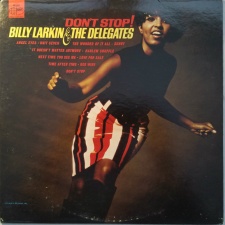
.
.
Dance the Bop! by Ray Conniff and his Orchestra and Chorus
Dance the Bop! by Ray Conniff and his Orchestra and Chorus includes an elaborate and entertaining eight page instruction booklet, “How to Dance the Bop.” Written by Art Silva, the fully illustrated booklet provides a brief background to the Bop, “a brand new distinctly American dance, but one that has its origins in the dances of the past.” “To Start,” the Cool Cat from the album over says: “get on your feet, keeping your Bop book in hand, and do the steps as you read through them.” The liner notes, clearly from the pre-YouTube instructional video era, state that the bop “is a lot of fun and has won complete approval of teen-agers wherever it is danced,” and offer a short list of practical instructions, including “practice every day, preferably in front of a mirror,” and “practice on a smooth or waxy floor.” Little information seems to be available on the Bop booklet author Silva, this may mark a highlight of his career as a “dancer, actor and instructor.” In any case, the bright cover, with red, yellow and orange blocks of color framing several black and white photos of dancers doing the Bop, along with a Siamese cat perfectly posed as a Bopping dancer.
.
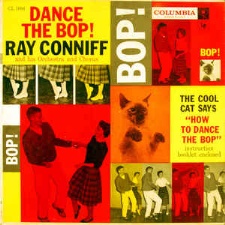
.
.
Ernie Freeman’s Limbo Dance Party
Ernie Freeman’s Limbo Dance Party presents a white background with the cursive, almost calligraphic, ‘limbo’ dominating the cover photo’s upper left. The title words are balanced on the lower right by the black pants and perfectly coiffed hair of the agile “Miss Natalia of Arthur Murray Studios,” who illustrates the necessary backward bend as she slides under a strong horizontal black line that stands in for the requisite limbo bar. Freeman, a versatile musician and bandleader, appeared in the 1956 film Rock Around the Clock, one of the first major films about rock ‘n’ roll. Freeman later gained fame as in-demand arranger, working Connie Francis, Johnny Mathis, Frank Sinatra, Simon and Garfunkel, as well as arranging over twenty-five records for the instrumental super group, The 50 Guitars of Tommy Garrett. Limbo Dance Party’s dance songs “Limbo Rock,” “Raunchy,” and “Memories Are Made of This” evoke an inspired evening. Instructions for the main event include “Set up your limbo bar,” “Bend your body backwards and bend your knees” and “shimmy shoulders to beat of the music.” To me, this cover evokes the free spirit of the 1960s.
.

.
.
Strings for a Space Age
“A Study in High Fidelity Sound,” Strings for a Space Age from 1959 features a blue cover; but this is an eerie midnight cerulean grey glow that tints the darkened half-moon and an alien-looking blue-blond as they frame a slim red, white, and blue rocket propelled aloft amidst a bed of flame and steam. According to the imaginative and allegorically minded liner notes, familiar favorites, such as “Autumn in New York” and “How High the Moon” are “cast in a predominantly outer-space mold.” Side two’s Space Suite is composed of tones, rhythms, and melodies that invoke “counterparts in specific space terms. For example, the music actually seems to suggest words like apogee (ceiling in the orbit of a satellite) and perigee (point nearest the earth in a satellite orbit), air resistance, acceleration, cosmic wind, circular motion, jet thrust, luminescent coatings, magnetic field,” and so on, “mirrored” in featured musician Bobby Christian’s composition. “The Beautiful Girl Above the Clouds,” in a section titled The Call tempts one to “compare the attraction exerted on the astronaut by the beautiful girl with the electronic and gravitational pull exerted on an artificial satellite by man-made controls and the gravitational attraction of the earth.” The magic of sound engineering combined with “unusual orchestrations, suggest the effects of all kinds of astral bodies whizzing along at high speed and in various stages of visibility.” And not too many liner notes feature terms like apogee…
.
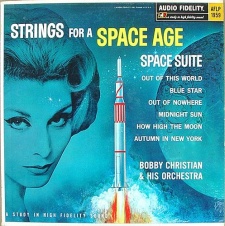
.
.
Sounds in Space
Many LPs released during the height of the space race adopted a space theme, no matter how tangential it might have been to the album’s content. Against dark space specked with white stars, three heavenly bodies, one blue with yellow ring and two shadowed and pale green, anchor the delightfully simple cover of Sounds in Space. Thin white lines map partial elliptical and circular orbits and add lightness to the design, which prominently displays the famous “Living Stereo” designation. The album, an RCA Victor “Stereophonic Sound Demonstration Record” begins with narrator Ken Nordine – who sadly passed away in February 2019 – announcing: “The age of space is here. And now RCA Victor brings you Sounds in Space.” The LP includes excerpts from high-profile RCA recordings, such as Stravinsky’s “The Rite of Spring,” Lena Horne’s “Day In…Day Out,” and Julie Andrews’s “Little Old Lady,” along with classic stereo demonstrations of a train puffing and a racetrack car zooming, as these sounds move between stereo channels. And, Nordine’s distinctive, charismatic commentary “travels” from one channel to another, as he explains “the miracle of RCA stereophonic sound.”
.

.
.
.
________
.
.
.

.
Graphic designer; writer; album cover collector and scholar based in Portland, Oregon; Jerry Jazz Musician .contributing writer
.
___
.
I’ll mention some of my favorites from the 1940’s and 1950’s rather than the rock album covers I grew up on.
The first great designer in the field was Alex Steinweiss. This cover for a Delius recording came out in about 1945. With the artist’s characteristic wit the painting deftly mixes symbols of painting and music.
.
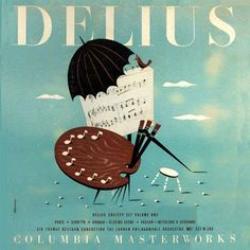
.
.
Jim Flora produced brilliant jazz covers in an energetic and comic style. This 1940s Armstrong cover is a beauty that I hope to find someday.
.
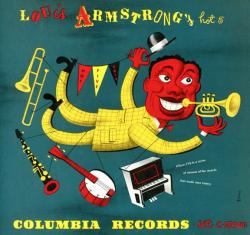
.
..
Portland is a great city for used vinyl, but classic Blue Note records are still rare in the used bins. This Reid Miles design for Freddie Hubbard’s Hub-Tones (1963) shows the impact simplicity can make. The Francis Wolff photo of the trumpeter is placed in the lowered piano key; perhaps it’s supposed to be a blue note. In 2015 the designer for Bob Dylan’s album Shadows in the Night borrowed this piano-keys motif.
.
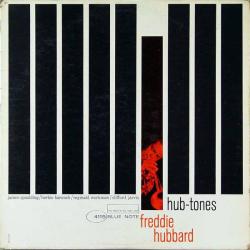
.
.
Erik Nitsche created incredible covers for Decca classical, including this 1951 album that played with the shape of a piano.
.
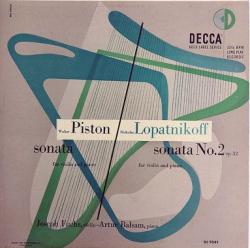
.
.
.
________
.
.
,
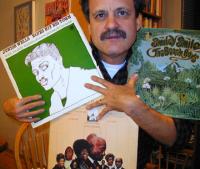
Tom Smucker
.
Pop culture critic (Creem, Village Voice); author (Why the Beach Boys Matter)
.
___
.
Smiley Smile, The Beach Boys. The Henri Rousseau meets Walt Disney front cover and Summer of Love greeting card back cover set-up this underappreciated eccentric stoner gem, top heavy on each LP side with “Good Vibrations” and “Heroes and Villains,” then quickly deconstructed by tracks that could have been cut by Lambert, Hendricks, and Ross on acid if they were surfers.
.
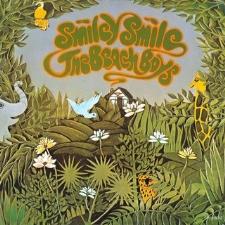
.
.
A Love Supreme, John Coltrane. The profile photo makes you believe the story that he thought the whole thing through before he wrote it down and recorded it.
.
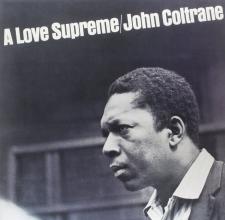
.
.
Gonna Take A Miracle, Laura Nyro. The face front photo captures the erotic longing and confident self-assertion in Nyro’s collaboration with Labelle on Doo Wop and Motown covers. Labelle deserve a better photo than they get on the back cover.
.
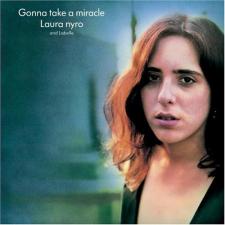
.
.
One Nation Under a Grove, Funkadelic. Sprawling art work tips you off that this is something new and old, utopian and disillusioned, unique and traditional, beautiful and ugly, and overflowing with ideas.
.
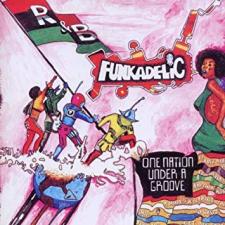
.
.
Now & Then, Carpenters. The triple fold-out elucidates their affluent, controlled, hermetic, pleasing, and at times deeply moving aesthetic better than some, but not all of the cuts on the album.
.
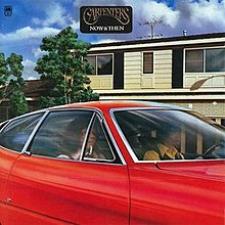
.

.
.
The Message, Grandmaster Flash & The Furious Five. Early 1980s Hip Hop still street, pre-bling, naive, ambitious.
.
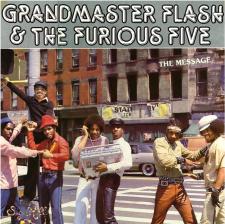
.
.
Cerrone 3, Supernature. One of the Eurodisco masters succeeds at social commentary and breaks the mold for Disco album covers.
.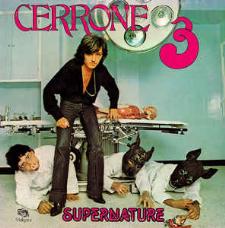
.
.
Mozart: The Piano Sonatas Complete Vol. 1, Lili Kraus. I don’t respond to classical music except for solo piano. My favorite is Simone Dinnerstein’s J.S. Bach Goldberg Variations, but this is my favorite trad classical cover. Forget Elvis, forget Lady GaGa. When you want blinding sartorial flash, check-out Lili.
.
.
.
A Tribute to the Best Damn Fiddle Player in the World (or, My Salute to Bob Wills), Merle Haggard. Lays out Haggard’s intention to explore and shape his own traditions and place Western Swing and Wills alongside Jimmy Rodgers and Lefty Frizell.
.
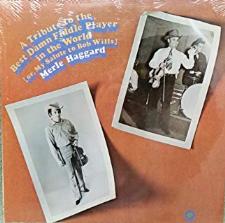
.
.
.
.
________
.
.
.
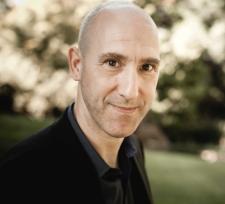
Andrew Feld
.
Author of two books of poetry, most recently.Raptor.(University of Chicago Press, 2012); .professor in the Creative Writing Program at the University of Washington.
–
___
.
Ok, so I worked in a used record shop in college, so I have very strong feelings about album covers. Here are some of my favorites:
.
Bill Evans and Jim Hall: .Undercurrent, the original, with no writing on the front, just that beautiful and ghostly photograph (from a fashion shoot) of woman in a gown floating in water, seen from below. Very Ophelia-like.
.
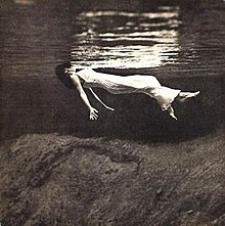
.
.
Frank Sinatra, .No One Cares. Frank alone at the bar, in a trench coat, totally in his own miserable emotional weather, staring into a glass of what has to be bourbon, a woman in a fur stole with her back to him, and behind him happy couples. A little campy, but a nice narrative.
.
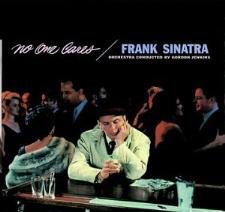
.
.
Julie London, .Nice Girls Don’t Stay for Breakfast. Julie in nothing but a trench coat.
.

.
.
Mingus, .Blues & Roots. A great Lee Friedlander photograph of Mingus, eyes closed (wearing suspenders?) and the headstock of his bass. It’s hard to choose between Lee Friedlander covers, because he’s such an empathetic photographer, but I love this album so much that it biases me towards the cover.
.
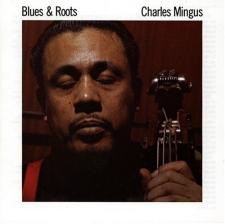
.
.
The Rolling Stones, .Exile on Mainstreet.. Another photographer, Robert Frank, his collage of a seedy, carnivalesque freak show America on the front, and then the Stones own freak show on the back.
.
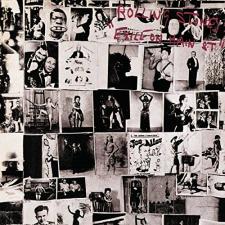 |
 |
.
.
Funkadelic, .America Eats. Its Young.. With the gatefold cover of the dollar bill with Statue of Liberty eating babies.
.
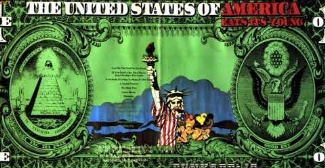
.
.
The Pogues, .Rum, Sodomy and the Lash. .Not a fan of the music. Love the cover.
.
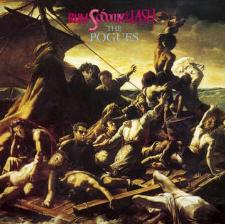
.
.
Gang of Four,. Entertainment.. Love the music and the cover.
.
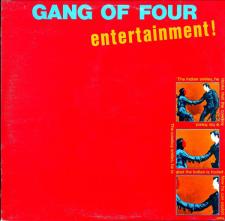
.
.
ZZ Top, .Tres Hombres.. This is a strange one. The green outside cover is bland and totally uninteresting. It’s the huge plate of Mexican food spilling everywhere inside the gatefold that’s so cool.
.

.
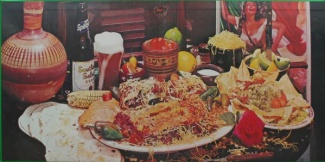
.
.
.
________
.
.
.
(no photo provided)
.
Retired English teacher and poet who has lived in 13 countries on five continents; two most recent collections of poetry are Meditation of an Old Man Standing on a Bridge and Traveling without Compass or Map; Jerry Jazz Musician contributing writer
.
___
.
SOME RECORD COVERS OF INTEREST TO ME
All these album covers are of albums I greatly enjoy, and the covers’ visuals arrest my attention for a variety of reasons. In some instances, a cover drew me to buy the record. In other cases, a cover created a visual of an artist (or the artist’s work) that has lingered in my mind. All these comments should be read with the caveat that I do not have a very well-developed visual sense.
What follows is a list of ten album covers that have mattered to me, some recently, some for decades. The music to be found in these albums ranges from Appalachian folk music to jazz to Celtic music to Tejano music. I could, I should perhaps note, start again and come up with a totally different list of ten covers of personal interest. There is no particular order to the list.
Three Forks of Cheat, Trapezoid (Appalachian hammered dulcimer music) Rounder 1979
Planxty — Planxty (Celtic folk) Polydor/Shanachie 1973
A Love Supreme — John Coltrane (jazz) Impulse 1965
Sketches of Spain — Miles Davis and Gil Evans (jazz) Columbia 1960
Old Hag You Have Killed Me — The Bothy Band (Celtic folk) Mulligan 1976
Kind of Blue — Miles Davis (jazz) Columbia 1959
Hawk Eyes — Coleman Hawkins (jazz) Prestige 1959
Dexter Gordon with Junior Mance Trio at Montreux — Dexter Gordon/Junior Mance (jazz) Prestige 1970
Steal Away — Charlie Haden and Hank Jones (jazz) Verve 1995
La Pistola y El Corazon — Los Lobos (Tejano) Slash/Warner Brothers 1988
.
.
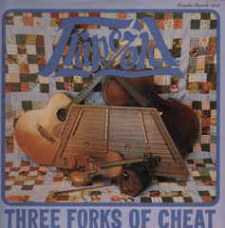 |
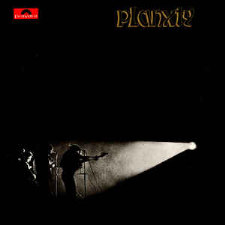 |
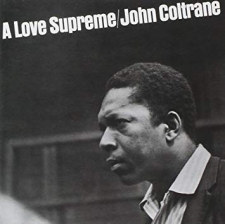 |
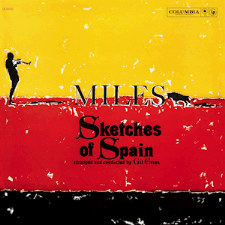 |
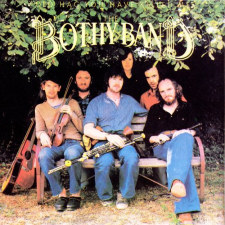 |
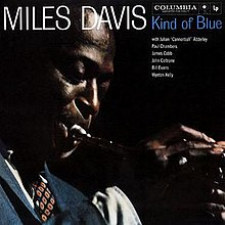 |
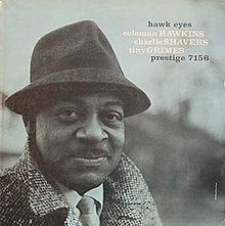 |
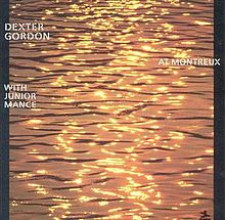 |
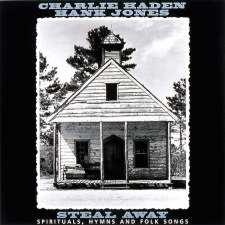 |
 |
.
.
.
________
.
.
.

..
Pianist; composer; educator
.
___
.
Monk, Underground
Chris Connor, Atlantic 1228
Boston Symphony Orchestra, Honegger Symphonies 2 and 5
Ray Charles, Yes Indeed!!
Al Green, Let’s Stay Together
Mahalia Jackson, Live in Europe
Ran Blake, Suffield Gothic
Archie Shepp, Blase
.
.
 |
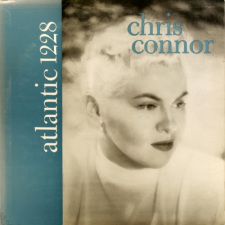 |
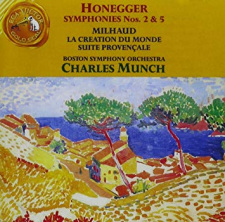 |
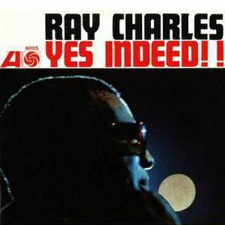 |
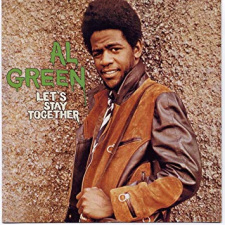 |
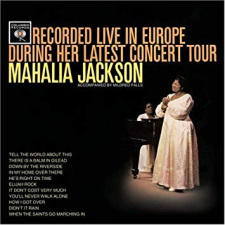 |
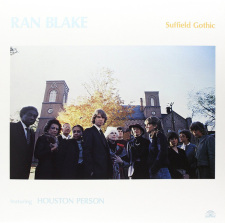 |
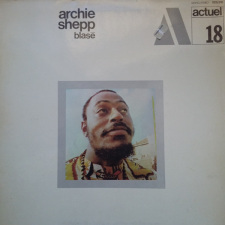 |
.
.
.
.
.
.
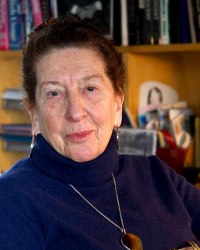
Maxine Gordon
.
Jazz historian; promoter, author of .Sophisticated Giant: The Life and Legacy of Dexter Gordon
.
___
.
Art Blakey’s Jazz Messengers at Birdland; Ugetsu
I love this cover for several reasons. I love this band and I loved Birdland where we went when we were teenagers. It was recorded in 1963 and has Freddie Hubbard, Curtis Fuller, Wayne Shorter, Cedar Walton, Reggie Workman with Art Blakey. I listen to “One By One” often. What a band! What a solo by Wayne.
.
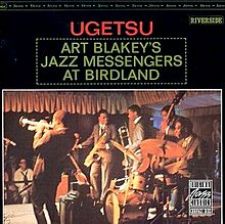
.
.
.
Aretha Franklin; Aretha Arrives
I love all Aretha albums but this cover is so beautiful. I first heard Aretha in 1970 and followed her faithfully since then. This album is from 1967 on Atlantic. My favorite track is “Ain’t Nobody Gonna Turn Me Around.”
.
.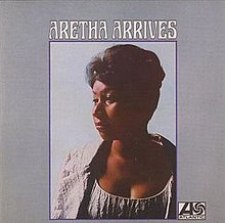
.
.
Woody Shaw; Woody III .has an album cover that I treasure. The baby on the cover is my son Woody Louis Armstrong Shaw III. He is now 40 years old. The cover photo was taken by Giuseppe Pino and it is of Woody I, II, and III. The music is perfect and tells the musical story of Woody Shaw’s family. It was released in 1979 on Columbia Records..
Woody Shaw: “The first part which is called. Woody I: On the New Ark. is a tribute to my father. It musically conveys my appreciation of my musical heritage. Woody II: Other Paths. is also a tribute to my musical past, but is based more on my actual playing experiences. This part has a very creative edge to it, and I think it shows my constantly moving forward and exploring ‘other paths.’ The last part,. Woody III: New Offerings. is dedicated to my son, Woody Louis Armstrong Shaw the Third. It expresses my hope for him and for his children. Musically, it’s connected to the other two parts, but it also stands on its own as a complete tune. I want my son to grow up, feeling that he, too, can stand on his own, but always has the support of his family.”
.

.
.
Dexter Gordon; Dexter Calling
This cover with Dexter Gordon on the phone in a phone booth is one of my favorites because before I met Dexter (who was my late husband), I saw this cover because John Coltrane brought it over to Elvin Jones’ apartment on the Lower East Side. They sat and listened to it over and over. This Blue Note album was recorded in 1961 and features Kenny Drew, Paul Chambers, and Philly Joe Jones. It has tunes that Dexter wrote for the L.A. production of the play. The Connection. He was very fond of this album and always liked to think of Trane and Elvin listening to it while he was living in Europe.
.
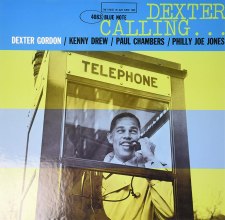
.
.
Shirley Scott; Scottie
“Scottie” was one of Shirley Scott’s nicknames along with “Little Miss Half Steps” (George Coleman’s nickname for her). Scottie .was recorded in 1958 on Prestige with George Duvivier on bass and Arthur Edgehill on drums. I love this cover because it is a candid photo of my very good friend rather than other covers where she was posed to try to market “Queen of the Organ.”
.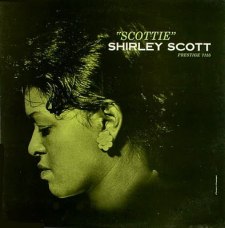
.
.
.
________
.
.
.
.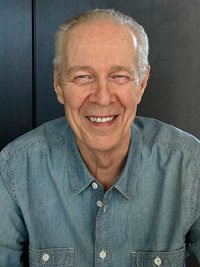
Bob Hecht
.
Retired jazz radio host; writer; producer; film editor; Jerry Jazz Musician contributing writer; host of the. Joys of Jazz .podcast
.
___
.
.
When it was first released in 1957, Miles Davis’. Cookin’ with the Miles Davis Quintet. album on the Prestige label was one of my earliest jazz record purchases. I would spend hours listening to Miles and Trane while staring at the entrancing black ink cover illustration by Phil Hays (cover design by Reid Miles with a great accent of red at the top for the title) so artistically depicting trumpet valves, fingers and the bell of the horn. It seemed to shout out. jazz trumpet! Sixty-some years later the illustration is still captivating me!
.
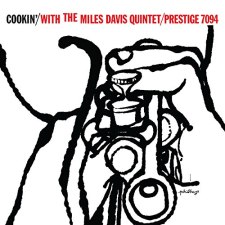
.
..
.
I would give anything to have been in the room with Lester Young and Roy Eldridge and to have heard the story that had cracked them up so totally as captured in Burt Goldblatt’s marvelous color photo on Lester’s .Laughin’ to Keep from Cryin’. album. The image is not only a perfect complement for the album title, but somehow captures the camaraderie and joie de vivre that I often associate with jazz musicians.
.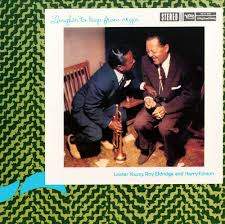
.
.
The simplicity and strength of the photo and cover design by Tom Hannan for Sonny Rollins’ great album, .Saxophone Colossus .could not be more perfect. The detail-less silhouette image of Sonny, and the great title, have such combined power, alluding perhaps to the famed Greek sculpture of the Colossus of Rhodes but rendering it as the Colossus of Rollins!
.
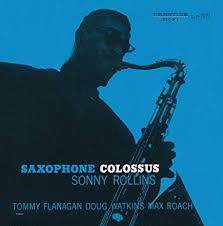
.
.
.
For decades I marveled at the evocative black-and-white photo on the cover of Thelonious Monk’s Columbia album titled simply. Monk, before learning that the image was the creation of one of the all-time great photographers, W. Eugene Smith. And I thought, “No, that couldn’t possibly be an actual. joint .Monk was smoking, could It? On a Columbia Records album cover?” But yes, it was indeed, the photo taken during a rehearsal at Smith’s mid-town Manhattan loft where Monk and Hall Overton rehearsed the band for Monk’s famed Town Hall concert.
.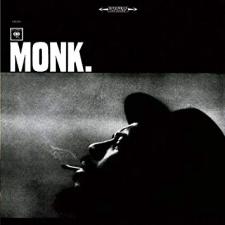
..
.
The black-and white portrait of Lennie Tristano and the simple but powerful text layout on Atlantic’s classic 1955. Tristano .album (photo and design by Burt Goldblatt) perfectly reflect the mood of the artist and his music. The darkness of the close-up portrait seems to mirror the darkness of this sightless genius of the piano, as well as the dark moods of some of the selections, like the great blues “Requiem” in honor of Charlie Parker.
.

.
.
.
________
.
.
.
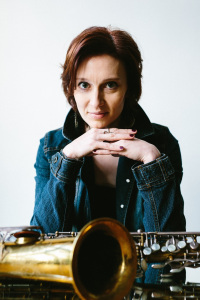
.
Composer; saxophonist; Whirlwinds Records recording artist; leader of British jazz trio Satori; .resident composer and tenor player for the London Jazz Orchestra; most recent recording In the Corners of Clouds .(Whirlwind)
.
___
.
What a great question! I really like albums that have a sense of unity between the different elements, including the tunes, tune titles, musicians, and particularly the artwork which seems to be something that often gets neglected in terms of quality and thoughtfulness. That said, here are my top five all time favourites:
.
Joni Mitchell – Both Sides Now. I love this self-portrait, it looks like she’s reflecting on life and makes me wonder how she felt about herself and the way her voice was changing so much during this time. The music and artwork reflect each other in their depth and evocative narrative.
.
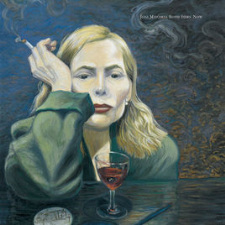
.
.
Radiohead – Amnesiac. This is by far my favourite Radiohead album cover – the others leave me a bit cold despite appreciating how bonkers they can be. I like this one because it’s simple and bold but maintains the oddness that is a feature of their artwork and videos. It also reminds me of Rothko’s paintings, which makes me realize all of this is really a question of taste – I tend to prefer striking images that aren’t too busy. Perhaps this is also true of my musical tastes!
.

.
.
Grace Jones – Island Life. I’m not a huge fan of her musical work, but if I’m talking about striking images then this cover is the pinnacle! It has such a feeling of movement and dynamism that I bought the LP in a second hand record shop before I’d heard the music just so I could keep looking at it. A truly beautiful cover.
.
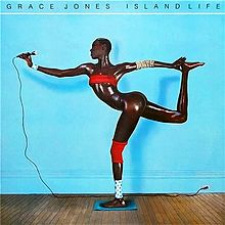
.
.
Julian Argüelles – Tetra. This is a relatively recent album from one of my favourite saxophonists and composers, who is incidentally another Whirlwind Recordings artist. I don’t actually know who created the image, but it uses fantastic colours and shapes – another unique and arresting cover.
.
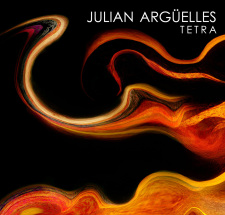
.
.
Collocutor – Instead. Apologies for listing an album that I played on, but I honestly love this cover! It was created by the designer .Yohanna Alem and manages to capture exactly what Tamar Osborn (the bandleader) is creating musically in terms of her search for a unique group collaborative sound.
.

.
.
.
________
.
.
.
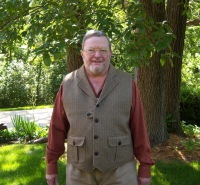
.
Poet; musician; Jerry Jazz Musician contributing writer
.
___
.
I have four covers I have really liked over the years:
.
The trumpet player, Ray Anthony, Jam Session at the Tower. Ray has a picture insert, playing his Selmer Paris Trumpet. A picture of the “Capitol Records,” round tower is in the back. My dad (who was a tenor sax player), had all of Ray’s albums. We played this over and over, with songs like: “Flying Home,” “Perdido,” and “How High the Moon.” I met Ray and talked with him a couple of times.
.
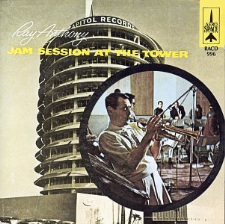
.
.
.
The Oscar Peterson Trio Plays. This has a jazz painting on the front which really represented the music. It was from high school, in the 1960’s, when I also played upright bass. There were such great songs as “Let’s Fall in Love,” and “Satin Doll.”
.
.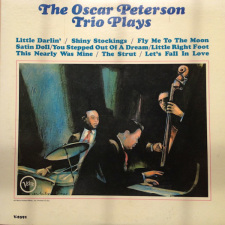
.
.
Third would be the Ron Carter, Piccolo, album. On the cover Ron is looking through the curve of his upright bass. Very cool. It was out of print for a long time but I found it a couple of years ago on CD. I will tell you that you have to get this if you like the bass! Ron plays harmonics on notes, which is done so well, you won’t believe it. This is absolutely one of my favorite albums ever.
.
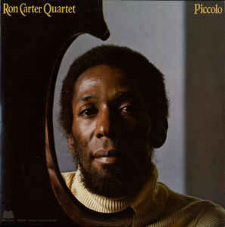
.
.
The album cover, David Sanborn. The cover looks great, and there also several other great pictures of David. This album also has Hiram Bullock on guitar and Rosalinda de Leon on keyboards. An early album, with the “great Sanborn sound.” I was in high school band with him in St.Louis, in the 1960’s. He could play 1000 times better than any of us!
.
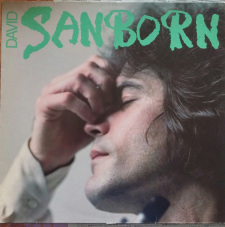
.
.
.








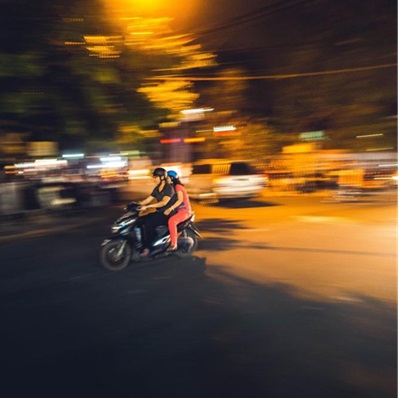


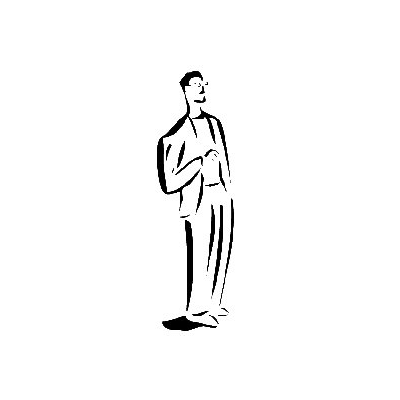
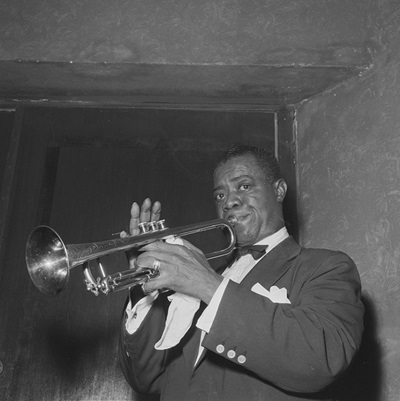
































My favorite album cover has to be an album I purchased in Apr. 1967 from Don Pullen. It was the Graves-Pullen Duo recorded at Yale University in 1966. My album cover is one of 100 covers that was hand painted by Milford Graves. If you go here: http://www.donpullen.de/disco/yale.htm you will see 5 of the 100 covers with mine being the last one.
I loved Dennis Pohl’s over-the-top, surrealistic photomontages for Arista-Freedom and ESP, especially Oliver Lake’s “Ntu: Point From Which Creation Begins,” with its bioluminescent sea life and Paul Bley’s “Copenhagen and Haarlem.”
My favorite ECM cover is Veljo Tormis’ “Litany to Thunder,” with the tree’s shape echoed by the clouds behind it. Hardly any of my favorites from ECM’s recent years appeared in the Lars Müller book “Windfall Light,” and in fact in some ways the selection was quite perverse — a lot of blurred-to-abstraction photography and purely typographic covers.
Jim Flora’s “Inside Sauter-Finegan” is a masterpiece, not to mention a delightful visual embodiment of the music inside. I also loved the cover of Sauter-Finegan’s “Under Analysis.”
But to me, the greatest LP sleeve designer of all time remains Reid Miles. His body of work is absolutely perfect.
With more than 3,000 jazz LPs and more than 4,000 CDs, many of them reissues, in my collection, I really enjoyed this article and the covers cited.
Rollins “Way Out West,” Monk’s “Underground,” a Shorty Rogers small band in a tree for an Atlantic album cover, and the ribald photo on “You Get More Bounce With Curtis Counce” have long been some of my favorites, but I really appreciate the graphic design and intimate photography cited by the various contributors. Like many of the respondents, I react strongly to very personal photography, but also to artful design. Wonderful article!
Jim,
Go here: https://lee-santa.pixels.com/ to see my jazz photos that you may enjoy.
Lee